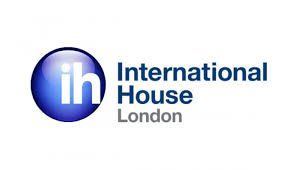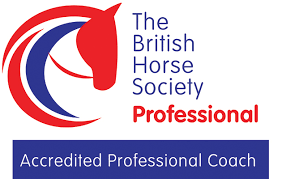
Health, Safety, and Wellness Programs
Course ID: 2512080101211ESH
Course Dates : 08/12/25 Course Duration : 5 Studying Day/s Course Location: London, UK
Language: Bilingual
Course Category: Professional and CPD Training Programs
Course Subcategories: Health, Safety and Risk Management
Course Certified By: ESHub CPD & LondonUni - Executive Management Training
* Professional Training and CPD Programs
Leading to:
Executive Diploma Certificate
Leading to:
Executive Mini Masters Certificate
Leading to
Executive Masters Certificate
Certification Will Be Issued From :
From London, United Kingdom
Course Information
Introduction
The modern workplace is evolving at an unprecedented pace, with organizations increasingly recognizing the importance of fostering environments that prioritize employee health, safety, and wellness. This shift is not merely a trend but a strategic imperative driven by evidence linking well-managed health and safety programs to enhanced productivity, reduced absenteeism, and improved organizational performance. The World Health Organization (WHO) emphasizes that workplaces are critical settings for promoting health, as they serve as hubs where individuals spend a significant portion of their lives. By addressing risks and fostering wellness, organizations can create sustainable work environments that benefit both employees and employers.
Despite growing awareness, many organizations face challenges in implementing effective health, safety, and wellness programs. A 2022 survey by the International Labour Organization (ILO) revealed that nearly 60% of businesses struggle with inadequate training, inconsistent compliance with regulations, and insufficient integration of wellness initiatives into broader organizational strategies. These gaps often lead to preventable accidents, chronic illnesses, and low morale among employees. Furthermore, the rapid advancement of technology and changes in work patterns, such as remote and hybrid models, have introduced new complexities in managing occupational health and safety. This course addresses these challenges by equipping participants with the tools and knowledge necessary to design, implement, and evaluate robust programs tailored to their unique contexts.
Understanding the theoretical underpinnings of health, safety, and wellness is essential for success. Frameworks like Maslow’s Hierarchy of Needs and Herzberg’s Two-Factor Theory highlight the intrinsic connection between physical safety, psychological well-being, and job satisfaction. Similarly, systems thinking approaches underscore the importance of viewing health and safety as interconnected components of organizational culture rather than isolated functions. For instance, a multinational manufacturing company implemented a comprehensive wellness program that combined ergonomic assessments, mental health support, and fitness incentives. Over two years, the initiative resulted in a 30% reduction in workplace injuries and a 15% increase in employee engagement scores. Such examples demonstrate the transformative potential of integrating theory with practice.
For professionals tasked with overseeing health, safety, and wellness initiatives, mastering this domain offers significant personal and professional benefits. Individuals gain credibility as leaders capable of navigating complex regulatory landscapes while championing employee-centric policies. Organizations, on the other hand, experience tangible returns on investment through reduced healthcare costs, improved retention rates, and enhanced brand reputation. According to a study published in the Journal of Occupational and Environmental Medicine , companies with strong wellness programs report up to 25% higher profitability compared to those without. These outcomes underscore the dual value proposition of investing in health, safety, and wellness expertise.
Real-world applications further illustrate the relevance of this course. Consider a tech startup that transitioned to a fully remote model during the pandemic. Without proper guidance, employees began experiencing burnout due to blurred boundaries between work and personal life. By adopting structured wellness strategies—such as virtual mindfulness sessions, flexible scheduling, and regular check-ins—the company successfully mitigated these issues and maintained high levels of productivity. Another case involves a construction firm that overhauled its safety protocols after a series of incidents. Through targeted training and continuous monitoring, the firm achieved zero-accident status within a year, earning recognition from industry bodies. These stories exemplify how proactive measures can yield profound impacts.
This course is designed to empower participants with actionable insights and practical skills to drive meaningful change in their organizations. Whether you are an HR manager seeking to enhance employee well-being, a safety officer striving to ensure compliance, or a consultant advising clients on best practices, this program will equip you with the knowledge and confidence to excel. By blending foundational principles with cutting-edge trends, the curriculum ensures relevance across diverse industries and contexts. Join us on this journey to redefine workplace health, safety, and wellness.
Objectives
By attending this course, participants will be able to:
Analyze key frameworks and theories underpinning effective health, safety, and wellness programs.
Evaluate current practices within their organizations to identify gaps and opportunities for improvement.
Design customized strategies to address specific health, safety, and wellness challenges faced by their teams.
Implement evidence-based interventions aligned with legal and regulatory requirements.
Apply risk assessment techniques to proactively mitigate potential hazards in various workplace settings.
Assess the impact of wellness initiatives using measurable metrics and feedback mechanisms.
Develop communication plans to engage stakeholders and foster a culture of accountability and care.
Who Should Attend?
This course is ideal for:
HR managers and directors responsible for employee well-being and organizational culture.
Safety officers and compliance specialists tasked with ensuring adherence to health and safety standards.
Team leaders and supervisors seeking to promote safe and healthy working conditions for their teams.
Consultants and trainers who advise organizations on implementing health and wellness programs.
Educators and policymakers involved in shaping workplace policies and practices.
The course is particularly valuable for professionals aiming to bridge knowledge gaps related to emerging trends in occupational health and safety. While it caters primarily to intermediate learners with some prior exposure to the field, beginners will also find the foundational modules accessible and informative. Advanced practitioners can leverage the advanced application sections to refine their expertise.
Training Method
• Pre-assessment
• Live group instruction
• Use of real-world examples, case studies and exercises
• Interactive participation and discussion
• Power point presentation, LCD and flip chart
• Group activities and tests
• Each participant receives a 7” Tablet containing a copy of the presentation, slides and handouts
• Post-assessment
Program Support
This program is supported by:
* Interactive discussions
* Role-play
* Case studies and highlight the techniques available to the participants.
Daily Agenda
Daily Schedule (Monday to Friday)
- 09:00 AM – 10:30 AM Technical Session 1
- 10:30 AM – 12:00 PM Technical Session 2
- 12:00 PM – 01:00 PM Technical Session 3
- 01:00 PM – 02:00 PM Lunch Break (If Applicable)
- Participants are expected to engage in guided self-study, reading, or personal reflection on the day’s content. This contributes toward the CPD accreditation and deepens conceptual understanding.
- 02:00 PM – 04:00 PM Self-Study & Reflection
Please Note:
- All training sessions are conducted from Monday to Friday, following the standard working week observed in the United Kingdom and European Union. Saturday and Sunday are official weekends and are not counted as part of the course duration.
- Coffee and refreshments are available on a floating basis throughout the morning. Participants may help themselves at their convenience to ensure an uninterrupted learning experience Provided if applicable and subject to course delivery arrangements.
- Lunch Provided if applicable and subject to course delivery arrangements.
Course Outlines
Foundations of Health, Safety, and Wellness
Overview of global health and safety standards (e.g., OSHA, ISO 45001).
Key theories and frameworks guiding successful programs.
Understanding the role of leadership in fostering a culture of safety.
Identifying common workplace hazards and their implications.
Day 2:
Risk Assessment and Mitigation Strategies
Conducting thorough risk assessments using established methodologies.
Prioritizing risks based on severity and likelihood.
Developing action plans to address identified risks.
Case studies highlighting successful risk mitigation efforts.
Day 3:
Compliance and Legal Requirements
Navigating national and international health and safety regulations.
Ensuring alignment with industry-specific compliance mandates.
Avoiding penalties and reputational damage through proactive measures.
Documenting processes to demonstrate regulatory adherence.
Day 4:
Designing and Implementing Wellness Initiatives
Principles of designing effective wellness programs.
Integrating mental health support into workplace initiatives.
Leveraging technology to enhance program accessibility and engagement.
Measuring the ROI of wellness investments.
Day 5:
Evaluation and Continuous Improvement
Tools and techniques for evaluating program effectiveness.
Collecting and analyzing data to inform decision-making.
Engaging employees in continuous feedback loops.
Building a roadmap for ongoing enhancement and innovation.



















































